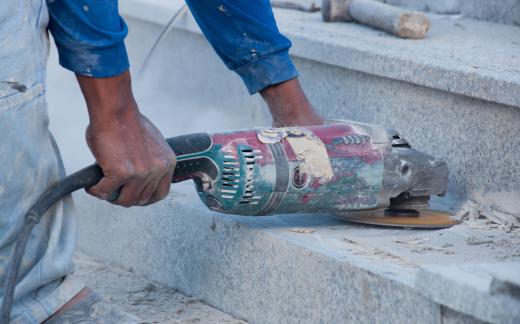Abrasive machining is the process of using abrasives to scrape the surface of hard objects. Small grains, called grit, are used to remove materials in small increments. The process is used to polish surfaces, cut through hard materials, or re-shape steel.
Grit is what makes abrasive machining work. By using grit as an abrasive, the operator is able to penetrate materials too hard for conventional cutting tools. It works when grit comes into contact with the surface using a high amount of force. Individual grit particles wear away the surface little by little. The process eventually removes enough material to create a cut or even out the surface, which polishes the object.

The abrasive can either be bonded or loose. Bonded abrasives are abrasives that are attached to a matrix. This allows for more control and precision because the matrix moves in a predictable manner. Bonded abrasives are used for sanding, diamond wire cutting, and sawing. The matrix can be made of different shapes depending on its intended function.
One common example is sandpaper. The abrasives are coated on paper that can be held by the hand. By adjusting the speed and pressure of the hand movement, the person can control the smoothing strength of the sandpaper.
Loose abrasives are ideal for large or hard-to-reach surfaces. Abrasive blasting is one method that uses loose abrasives. It uses high pressure to propel the abrasives on a surface to either smooth, roughen, or remove surface layer.
There are a multitude of uses for abrasive machining in various industries. An abrasive cutting machine, like a grinding disc, enables the operator to shape and cut through metal and stone. Internal cavities can be smoothed using abrasive-flow machining. Lapping creates an even surface useful for precision jobs.
Abrasive water-jet machining is different from regular abrasive machines because it does not use solid grit. Water is pressurized and ejected in a concentrated jet to direct the flow on the target surface. By using water as an abrasive, operators bypass the two usual disadvantages of a regular abrasive machine.
First, some solid abrasives are expensive. Silicon carbide and diamond used as industrial abrasives are costly to both manufacture and acquire. Second, the friction generated from the abrasive causes high heat, which adds cooling cost to the process. Water acts as both a coolant and an abrasive, which saves the operator additional cost.
The use of different grades of abrasives is particularly useful to abrasive machining. Different grades allow the operator to suit the abrasive to its function. Abrasive machining is utilized in jobs where there is small margin for error. The right abrasive grade can sometimes be the factor for a job well done.
